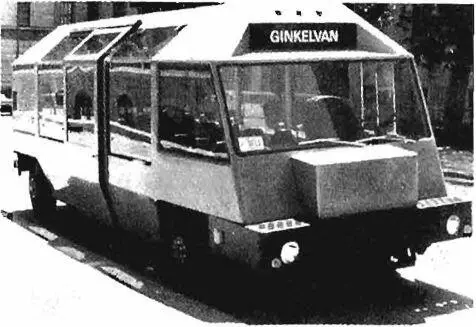Christopher alexander - A pattern language
Здесь есть возможность читать онлайн «Christopher alexander - A pattern language» весь текст электронной книги совершенно бесплатно (целиком полную версию без сокращений). В некоторых случаях можно слушать аудио, скачать через торрент в формате fb2 и присутствует краткое содержание. Жанр: Прочая научная литература, на английском языке. Описание произведения, (предисловие) а так же отзывы посетителей доступны на портале библиотеки ЛибКат.
- Название:A pattern language
- Автор:
- Жанр:
- Год:неизвестен
- ISBN:нет данных
- Рейтинг книги:3 / 5. Голосов: 1
-
Избранное:Добавить в избранное
- Отзывы:
-
Ваша оценка:
- 60
- 1
- 2
- 3
- 4
- 5
A pattern language: краткое содержание, описание и аннотация
Предлагаем к чтению аннотацию, описание, краткое содержание или предисловие (зависит от того, что написал сам автор книги «A pattern language»). Если вы не нашли необходимую информацию о книге — напишите в комментариях, мы постараемся отыскать её.
A pattern language — читать онлайн бесплатно полную книгу (весь текст) целиком
Ниже представлен текст книги, разбитый по страницам. Система сохранения места последней прочитанной страницы, позволяет с удобством читать онлайн бесплатно книгу «A pattern language», без необходимости каждый раз заново искать на чём Вы остановились. Поставьте закладку, и сможете в любой момент перейти на страницу, на которой закончили чтение.
Интервал:
Закладка:
Recent research, and full-scale experiments, have shown that a system of mini-buses, on call by telephone, can function in this fashion, taking people from door to door in 15 minutes, for no more than 50 cents a ride (1974): and that the system is efficient enough to support itself. It works just like a taxi, except that it picks up and drops off other passengers while you are riding; it goes to the nearest corner to save time—not to your own front door; and it costs a quarter of an average taxi fare.
The system hinges, to a certain extent, on the development of sophisticated new computer programs. As calls come in, the computer examines the present movements of all the various minibuses, each with its particular load of passengers, and decides which bus can best afford to pick up the new passenger, with the least detour. Two-way radio contact keeps the mini-buses in communication with the dispatcher at the computer switchboard. All this, and other details, are discussed fully in a review of current
I 10 20 MINI-BUSES
 |
| Canadian mini-bus. |
dial-a-bus research: Summary Re-port—The Dial-a-Ride Transportation System, M.I.T. Urban Systems Laboratory, Report USL-TR-70-10, March 1971.
Dial systems for buses are actually coming into existence now because they are economically feasible. While conventional fixed-route public transport systems are experiencing a dangerous spiral of lower levels of service, fewer passengers, and increased public subsidies, over 30 working dial-a-bus systems are presently in successful operation throughout the world. For example, a dial-a-bus system in Regina, Saskatchewan, is the only part of the Regina Transit System which supports itself ( Regina Telebus Study: Operations Report , and Financial Report , W. G. Atkinson et ah, June 1972). In Batavia, New York, dial-a-bus is the sole means of public transport, serving a population of 16,000 at fares of 40 to 60 cents per ride.
We finish this pattern by reminding the reader of two vital problems of public transportation, which underline the importance of the mini-bus approach.
First, there are very large numbers of people in cities who cannot drive; we believe the mini-bus system is the only realistic way of meeting the needs of all these people.
Their numbers are much larger than one would think. They are, in effect, a silent minority comprising the uncomplaining old and physically handicapped, the young and the poor. In 1970, over 20 percent of U.S. households did not own a car. Fifty-seven and five-tenths percent of all households with incomes under $3000 did not own a car. For households headed by persons 65 years of age or older, 44.9 percent did not own a car. Of the youths between 10 and 18 years of age, 80 percent are dependent on others, including public
11 I
TOWNS
transit, for their mobility. Among the physically disabled about 5.7 million are potential riders of public transportation if the system could take them door-to-door. (Sumner Myers, “Turning Transit Subsidies into ‘Compensatory Transportation,’ ” City , Vol. 6, No. 3, Summer 1972, p. 20.)
Second, quite apart from these special needs, the fact is that a web of public transportation, with large buses, boats, and trains, will not work anyway, without a mini-bus system. The large systems need feeders: some way of getting to the stations. If people have to get in their cars to go to the train, then, once in the car, they stay in it and do not use the train at all. The mini-bus system is essential for the purpose of providing feeder service in the larger web of public transportation.
Therefore:
Establish a system of small taxi-like buses, carrying up to six people each, radio-controlled, on call by telephone, able to provide point-to-point service according to the passengers’ needs, and supplemented by a computer system which guarantees minimum detours, and minimum waiting times. Make bus stops for the mini-buses every 600 feet in each direction, and equip these bus stops with a phone for dialing a bus.
| six passenger buses |
|---|
 |
| bus stops every 600 feet |
Place the bus stops mainly along major roads, as far as this can be consistent with the fact that no one ever has to walk more than 600 feet to the nearest one—parallel roads (23); put one in every interchange (34) ; and make each one a place where a few minutes’wait is pleasant—bus stop (92). . . .
I 12
establish community and neighborhood folicy to control the character of the local environment ac cording to the following fundamental frincifles:
| 21. | FOUR-STORY LIMIT |
| 22. | NINE PER CENT PARKING |
| 2 3 - | PARALLEL ROADS |
| 24 . | SACRED SITES |
| 25 - | ACCESS TO WATER |
| 26. | LIFE CYCLE |
| 27. | MEN AND WOMEN |
| I 13 |
| 21 FOUR-STORY LIMIT** |
|---|
 |
114
. . . within an urban area, the density of building fluctuates. It will, in general, be rather higher toward the center and lower toward the edges—city country fingers (3), lace of country streets (5), magic of the city (io). However, throughout the city, even at its densest points, there are strong human reasons to subject all buildings to height restrictions.
•i* •b •b
There is abundant evidence to show that high buildings make people crazy.
High buildings have no genuine advantages, except in speculative gains for banks and land owners. They are not cheaper, they do not help create open space, they destroy the townscape, they destroy social life, they promote crime, they make life difficult for children, they are expensive to maintain, they wreck the open spaces near them, and they damage light and air and view. But quite apart from all of this, which shows that they aren’t very sensible, empirical evidence shows that they can actually damage people’s minds and feelings.
 |
| “The Ministry of Truth—Mini true, in Newsfeak—was startlingly different from any other object in sight. It was an enormous -pyramidal structure of glittering white concrete , soaring up terrace after terrace 300 metres in the air.” (George Orwell , 1984) |
115
A PATTERN LANGUAGE
we have called it aA Pattern Language” with the emphasis on the word “A,” and how we imagine this pattern language might be related to the countless thousands of other languages we hope that people will make for themselves, in the future.
The Timeless Way of Building says that every society which is alive and whole, will have its own unique and distinct pattern language j and further, that every individual in such a society will have a unique language, shared in part, but which as a totality is unique to the mind of the person who has it. In this sense, in a healthy society there will be as many pattern languages as there are people—even though these languages are shared and similar.
Читать дальшеИнтервал:
Закладка:
Похожие книги на «A pattern language»
Представляем Вашему вниманию похожие книги на «A pattern language» списком для выбора. Мы отобрали схожую по названию и смыслу литературу в надежде предоставить читателям больше вариантов отыскать новые, интересные, ещё непрочитанные произведения.
Обсуждение, отзывы о книге «A pattern language» и просто собственные мнения читателей. Оставьте ваши комментарии, напишите, что Вы думаете о произведении, его смысле или главных героях. Укажите что конкретно понравилось, а что нет, и почему Вы так считаете.












